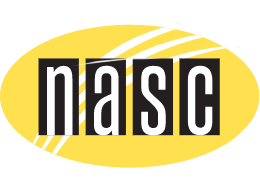Are Fish Skins Safe For Dogs?

If you share dinner table scraps with your dog, fish skin might be one of the foods that you scrape off your plate. Fish is full of nutrients and your dog probably likes the smell. But can dogs eat fish skin safely?
Are Fish Skins Safe for Dogs?
Not always. Despite the nutritional benefits of fish skin, there are a few reasons that fish skins could be dangerous for dogs. The biggest worry is the contamination with environmental pollutants that you and your dog could be exposed to in fish.
Toxins tend to accumulate in fatty tissue that’s right under the skin. When you give your dog fish skins from fatty fish, it could contain a variety of harmful toxins, such as:
- Heavy metals like mercury, lead, and arsenic
- Polychlorinated biphenyls (PCBs)
- Dioxins and furans
Parasites In Fish
There’s also a risk of harmful parasites like flukes or roundworms, especially in raw salmon or trout (even wild fish). Most healthy dogs eat raw fish regularly and when they have good immune systems they aren’t affected by these parasites. But to be sure, you can freeze the fish at a temperature of -4F (-20C for at least 24 hours to kill parasites. If you’re extra cautious, freeze it for a week or more. Freezing for longer won’t destroy nutrients.
Cautions With Fish Skins
So, if you do give your dog fish skins, follow these guidelines …
- Give your dog skin that has been frozen or well cooked to avoid the risk of parasites.
- Make sure the skin is not too oily, salty, or spicy. Some dogs do fine with spicy foods, but for others with sensitive stomachs, it may upset them.So if you give your dog your own fish skin leftovers, you may want to wipe of extra spices and oils first.
- Remove the outer scales. When you’re cooking a whole fish, scrape the outer layer of scales off the fish before cooking and feeding the skin to your dog. The outer scales can get stuck in your dog’s throat and even cause choking.
Despite these warnings, fish skin does have some health benefits for your dog.
Health Benefits of Fish Skin for Dogs
Fish is an excellent source of protein and it’s full of essential omega-3 fatty acids that your dog needs for important bodily functions like hormone regulation, immunity, controlling inflammation, supporting brain and eye function, skin health, and more. That’s why many dog owners supplement their dogs’ diets with fish or other omega-3 oils.
Not only does fish contain protein and good omega-3 fatty acids, but most dogs also find it delicious. Plus, humans sometimes don’t want to eat the skin, so giving it to your dog can be a good way to avoid waste.
RELATED: See why fish oil is not the best source of essential fatty acids for your dog …
What Types of Fish Skin Can Dogs Eat?
Salmon, cod, trout, and halibut are some of the most common types of fish that you may enjoy eating. So, can your dog eat the skin from all these types of fish?
Feed Wild Caught Fish
The answer is that the way the fish is raised and caught is more important than the type of fish. You should opt for fish that are sustainably raised or wild-caught. These fish are less likely to contain high levels of mercury or other contaminants.
Give Your Dog Smaller Fish
Smaller fish have shorter lifespans so they’ve had less time to accumulate toxins in their fatty tissues, including skin. Smaller fish are also lower on the food chain. Large fish who eat other fish can also accumulate higher levels of toxins. So it’s safest to avoid giving your dog skin from larger predator fish that live longer, such as tuna, mackerel, and swordfish.
Choose Fish Lower In Mercury
Fish with higher levels of mercury include shark, swordfish, king mackerel, marlin, large tuna like bluefin. Fish from the Gulf of Mexico are especially high in mercury. So always ask where your fish comes from.
Some types of fish with lower mercury content are sardines, Atlantic mackerel, cod, haddock, flounder, pollock, catfish and salmon, as well as smaller tuna like canned light tuna. (Albacore has a milder flavor but contains medium levels of mercury.)
Avoid Farmed Fish
Farmed fish tend to contain a lot of antibiotics. Fish farmers give these drugs to control infections from overcrowding in the farming areas. Some of these fish farms are also terrible environmental polluters. That’s why you should always choose sustainably raised fish.
Environmental Reasons to Avoid Fish
Eating fish comes at a huge cost to the environment. Our oceans are overfished and marine resources simply can’t keep up with the demand for human eating needs, let alone dogs. Most fish is not caught using verified sustainable harvesting methods.
The fact is, there are better ways to get the same nutrients that fish has, from less environmentally irresponsible sources.
Other Omega-3 Choices
One of these sources is green-lipped mussels, which you can buy sustainably farmed and free of toxins. The essential fatty acids DHA and EPA contained in fish, are also in organs like brains and eyes. There are also plant-based sources such as hempseed oils and phytoplankton.
RELATED: Learn about the best sources of omega-3 fatty acids for your dog …
Are Fish Skin Treats Good for My Dog’s Teeth?
You may have come across dehydrated fish skin chews for dogs in your local pet store. Some treat manufacturers claim that these rolled up jerky-style treats clean your dog’s teeth. Cod or salmon skin are common fish used for these treats.
Any type of chew helps your dog clean the tartar from his teeth, so there isn’t really anything specific about fish skin chews that make them particularly good for teeth. In fact, they’re softer than raw meaty bones you’d feed your dog, which are the best way to keep your dog’s teeth healthy. However, fish skin chews are also highly digestible, so they’re an acceptable chew option.
Fish is a trusted source of protein and omega-3 fatty acids for humans and dogs alike. If you happen to be having fish for dinner and want to share some with your dog, it’s okay to go ahead and do so. Just follow the guidelines above to avoid toxins or parasites in fish … and don’t give your dog fish skin too often.
References
Gordana Vuković et al. Persistent organic pollutants (POPs) in edible fish species from different fishing zones of Croatian Adriatic. Marine Pollution Bulletin, Volume 137, 2018, Pages 71-80.
Gandhi N et al. Dioxins in great lakes fish: Past, present and implications for future monitoring. Chemosphere. 2019 May;222:479-488.
Pye C, Crews C. Furan in canned sardines and other fish. Food Addit Contam Part B Surveill. 2014;7(1):43-5.
Henry TB. Ecotoxicology of polychlorinated biphenyls in fish–a critical review. Crit Rev Toxicol. 2015;45(8):643-61.
Davis JA, Hetzel F, Oram JJ, McKee LJ. Polychlorinated biphenyls (PCBs) in San Francisco Bay. Environ Res. 2007 Sep;105(1):67-86.
Ana Bocio et al. Concentrations of PCDD/PCDFs and PCBs in fish and seafood from the Catalan (Spain) market: Estimated human intake, Environment International, Volume 33, Issue 2, 2007,
Pages 170-175/Seafood Health Facts. Making Smart Choices: Balancing the Benefits and Risks of Seafood Consumption FDA. Mercury Levels in Commercial Fish and Shellfish (1990-2012), Updated October 2017.



